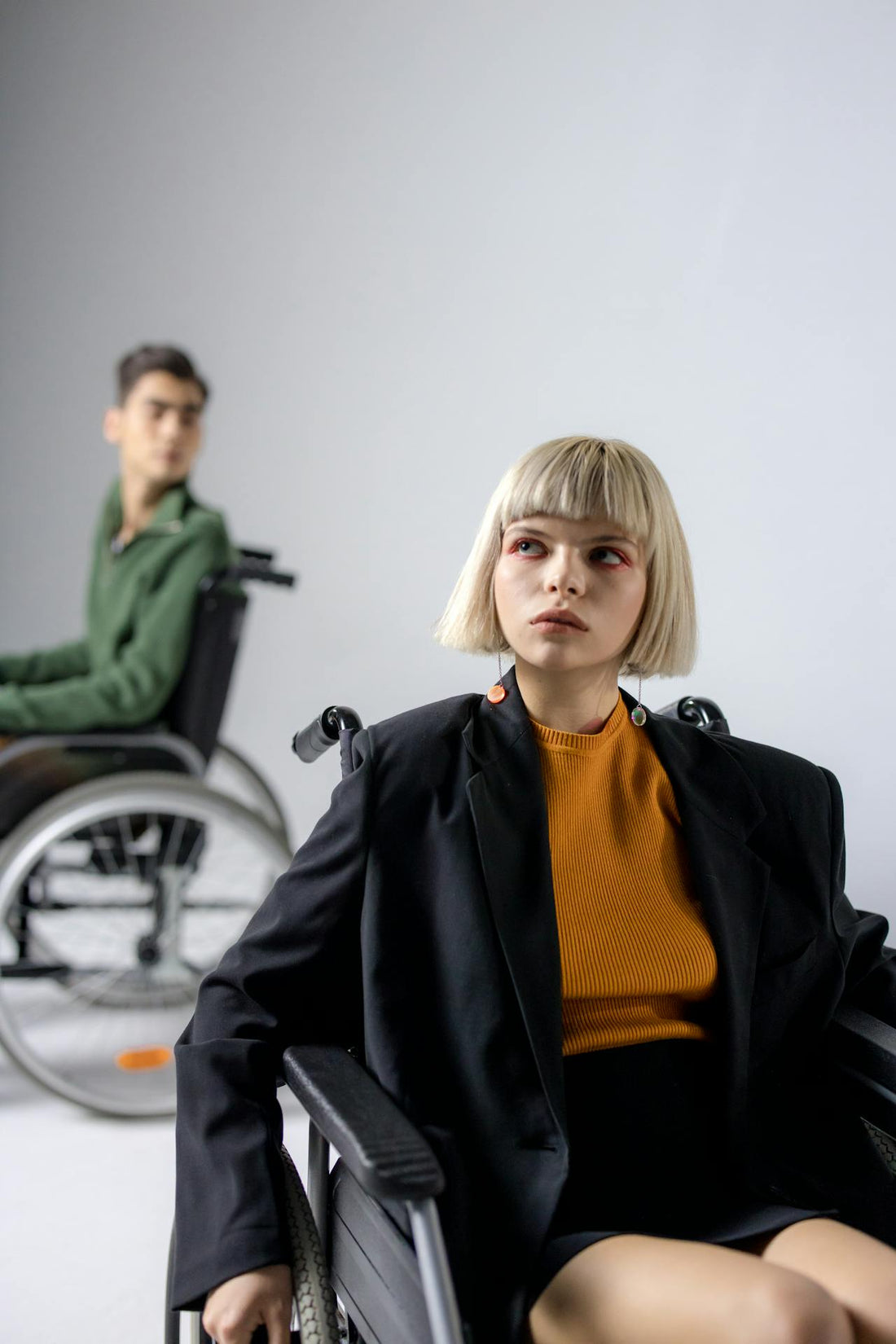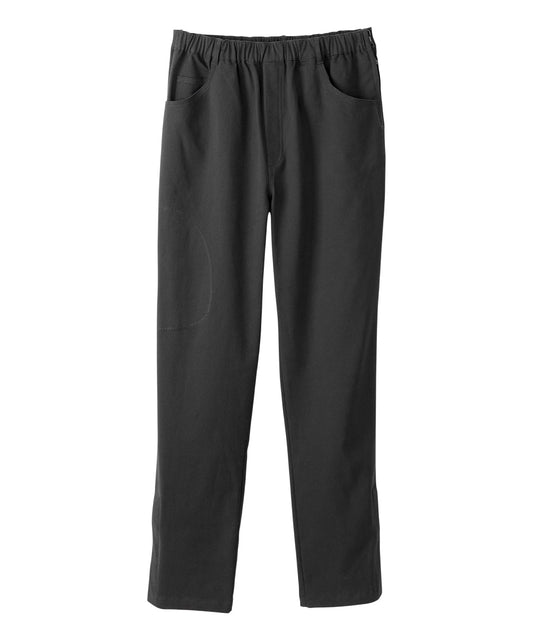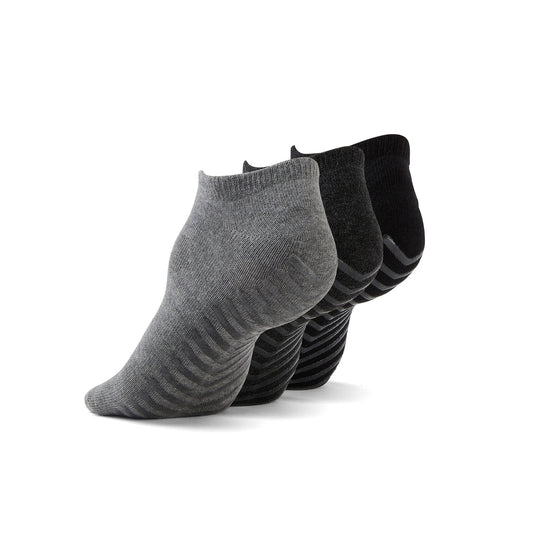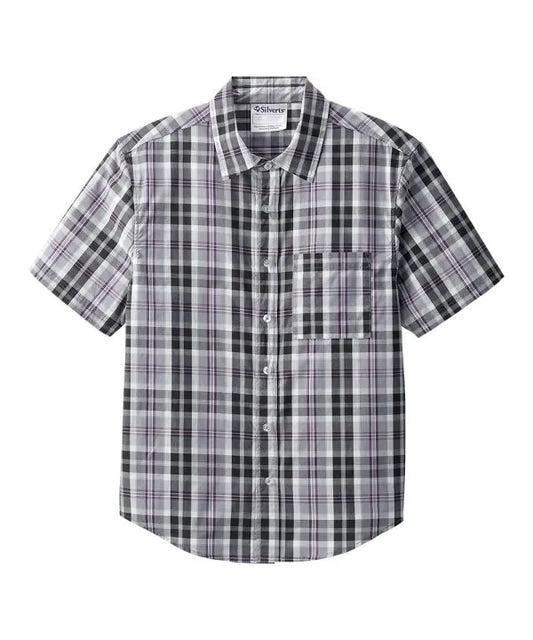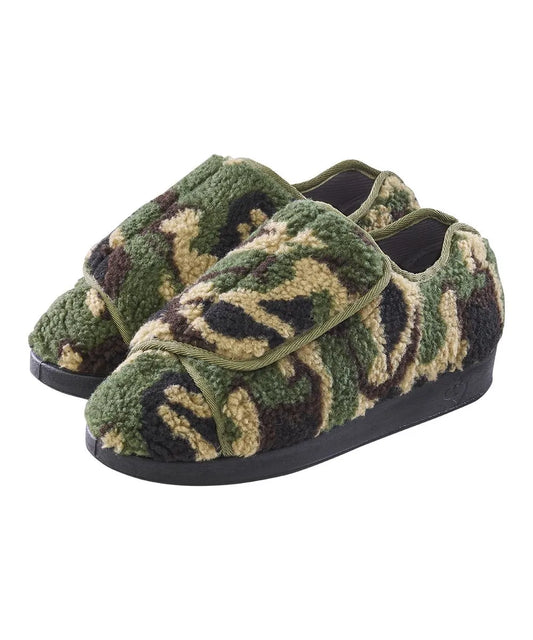Written by Arbaaz Ebrahim, edited by Danishy Kuganesan
Adaptive fashion is evolving rapidly, blending style, functionality, and inclusivity like never before. In 2025, expect major advancements in smart textiles, AI-driven customization, and sustainable materials, making clothing more accessible and stylish.
This blog explores key trends shaping adaptive fashion, including:
-
Popular fashion trends that combine style and accessibility.
-
New technologies like wearable tech and AI-assisted design.
-
The future of clothing, emphasizing sustainability and inclusivity.
-
Predictions for adaptive and sustainable fashion in 2025.
-
Fabric innovations, from breathable materials to durable, soft textiles.
-
Advances in magnetic closures and sensory-friendly fabrics improve comfort and ease of dressing.
With brands prioritizing functionality and accessibility, adaptive fashion is no longer a niche - it’s the future of fashion. Let’s dive into 2025’s biggest trends!
What fashion trends will be popular in 2025?
The fashion industry is evolving faster than ever, and 2025 is set to bring exciting new trends that focus on sustainability, technology, and inclusivity. From adaptive clothing innovations to AI-driven personalization, here’s what to expect in the coming year.
1. Sustainable and Circular Fashion
Sustainability is no longer just a trend - it has become a necessity. In 2025, more brands are expected to embrace circular fashion, focusing on designing garments that promote longevity, repairability, and recyclability. Consumers who prioritize eco-conscious choices will see a surge in biodegradable fabrics, including organic cotton, hemp, and mushroom leather. Additionally, the industry will witness an increased use of recycled and regenerated textiles, reducing waste and environmental harm. Many fashion brands will adopt zero-waste production methods and prioritize ethical sourcing, ensuring a lower environmental footprint. Those leading the industry will focus on low-carbon manufacturing and sustainable material innovation, paving the way for a greener fashion future.
2. Gender-neutral and Inclusive Fashion
The fashion industry is becoming increasingly inclusive, with a growing demand for gender-fluid designs. Brands are responding by creating versatile, unisex apparel that moves beyond traditional gender norms. Clothing with adjustable fits and seamless designs will become more prevalent, offering wearers greater comfort and flexibility. Additionally, adaptive fashion lines will continue to expand, catering to diverse needs such as wheelchair-friendly styles and easy-on, easy-off features, ensuring that fashion is accessible to all individuals regardless of ability.
3. AI-Driven Personalization in Fashion
Technology is revolutionizing the fashion industry, with AI-driven personalization set to redefine shopping experiences in 2025. Brands will increasingly use AI-powered virtual fitting rooms, allowing customers to try on clothes digitally from the comfort of their homes. With AI analyzing body measurements and style preferences, clothing recommendations will become more accurate in creating tailored suggestions. Additionally, the advancement of 3D printing technology will enable brands to offer on-demand, personalized fashion, ensuring garments are designed to fit individuals perfectly. These innovations will reduce return rates, minimize waste, and enhance the efficiency of online shopping, making it more convenient for consumers.
4. Minimalist Aesthetic with Statement Pieces
Minimalism will continue to dominate in 2025, emphasizing neutral colour palettes, clean silhouettes, and timeless essentials. However, alongside this simplicity, bold statement pieces will also gain popularity. Fashion enthusiasts can expect oversized outerwear and futuristic designs to become more prominent, offering a unique contrast to minimalistic styles. Additionally, metallic and tech-inspired textures will bring a modern touch to contemporary fashion. This balance between practical simplicity and bold self-expression will shape the industry, catering to consumers who appreciate both understated elegance and eye-catching details.
5. Smart and Adaptive Clothing
Adaptive clothing is transforming the industry by making fashion more inclusive and accessible to individuals with disabilities and mobility challenges. In 2025, adaptive fashion is set to see groundbreaking innovations that prioritize ease, functionality, and style. Adaptive fashion isn't just about accessibility - it’s about empowerment, confidence, and self-expression. As more brands invest in inclusive design, the industry is finally breaking barriers and ensuring that fashion is for everyone.
Key Trends and New Technologies in Adaptive Fashion for 2025:
-
Smart Fabrics & Responsive Textiles: These materials regulate temperature, wick moisture, and stretch comfortably to provide a tailored fit. Some fabrics can even adjust to environmental conditions to enhance usability.
-
Magnetic Closures & Easy Fastenings: Magnetic zippers, Velcro alternatives, and innovative snap-on designs make dressing significantly easier for individuals with dexterity or mobility limitations. Click here to see our Mens Sherpa Shacket With Magnetic Snaps!
-
3D Knitting & Customization: Seamless, one-piece garments created using 3D knitting technology offer a perfect fit while reducing material waste.
-
Augmented Reality (AR) Fitting Technology: Virtual fitting rooms will help users find the perfect adaptive clothing fit, reducing the hassle of returns and increasing shopping accessibility.
-
Sensory-Friendly Innovations: Clothing designed for people with sensory sensitivities will feature tagless labels, ultra-soft materials, and flat seams to reduce irritation and discomfort.
-
Wearable Assistive Tech: Some adaptive garments will integrate assistive technology such as haptic feedback, biometric tracking, and posture support sensors, enhancing the wearer's independence and quality of life.
-
Fashion-Forward Adaptive Designs: Adaptive fashion is shifting away from purely functional designs and becoming more stylish, incorporating trend-forward silhouettes, colour palettes, and high-quality materials.
These innovations are making adaptive fashion more functional, stylish, and inclusive, breaking barriers in the industry.
Men's Sherpa Shacket With Magnetic Snaps
What is the future of clothes?
As fashion evolves, innovation, sustainability, and personalization are shaping the future of clothing. Advancements in smart textiles, AI-driven customization, and sustainable materials are making garments more functional and inclusive than ever before. While these developments impact the entire fashion industry, adaptive fashion is at the forefront of transformation, ensuring individuals with disabilities and mobility challenges have access to stylish, practical clothing that enhances independence and comfort.
How Technology is Changing Adaptive Fashion
One of the most significant shifts in adaptive clothing is the integration of technology. Smart fabrics that regulate temperature, repel moisture, and stretch for a custom fit are making clothing more comfortable and accommodating. Additionally, wearable technology is being incorporated into adaptive garments, including biometric sensors, posture correction features, and assistive haptic feedback for visually impaired individuals.
Another major breakthrough is AI-driven customization and 3D printing. With AI, clothing can be designed to perfectly fit an individual’s body shape, ensuring better comfort and mobility. 3D printing technology allows for seamless, one-piece garments that reduce irritation from seams and improve overall flexibility.
Magnetic Closures and Sensory-Friendly Fabrics
As fashion becomes more inclusive, two innovations are revolutionizing the industry - magnetic closures and sensory-friendly fabrics. These advancements are transforming adaptive clothing, making it more functional, stylish, and accessible for individuals with disabilities, sensory sensitivities, or mobility challenges.
Magnetic Closures - A Game-Changer for Adaptive Fashion
Traditional buttons, zippers, and hooks can be difficult for individuals with limited dexterity, arthritis, or neurological conditions. Magnetic closures are seamless, easy-to-use alternatives that allow wearers to dress independently with minimal effort. They work by aligning automatically and fastening securely, reducing frustration and making daily dressing more efficient.
Several brands have embraced magnetic closures in shirts, jackets, and pants, offering a stylish yet accessible solution. Additionally, these closures provide a dignified alternative to traditional fastenings, helping individuals feel more confident in their clothing choices.
Innovations in smart magnets are also on the rise, with some designs featuring strength-adjustable or self-locking magnets to ensure security while allowing easy removal. This technology is especially beneficial for individuals with mobility impairments or caregivers assisting with dressing.
Sensory-Friendly Fabrics - Comfort for All
For individuals with autism, sensory processing disorders, or skin sensitivities, clothing can feel overwhelming due to rough textures, tight fits, and irritating seams. Sensory-friendly fabrics address these challenges by prioritizing softness, stretchability, and seamless designs. Check out our Ultra-Soft Anti-Slip Crew Socks here!
Key features of sensory-friendly clothing include:
-
Tagless labels to prevent irritation.
-
Flat seams to reduce friction on the skin.
-
Ultra-soft materials like organic cotton, bamboo, and modal, which provide a gentle feel.
-
Breathable and moisture-wicking fabrics to maintain comfort throughout the day.
As adaptive fashion continues to evolve, magnetic closures and sensory-friendly fabrics are becoming essential components of inclusive design. These innovations ensure that fashion is not just about style, but also about comfort, accessibility, and independence.
Ultra-Soft Anti-Slip Crew Socks
Sustainability Meets Accessibility
Sustainability is another driving force behind adaptive fashion’s evolution. Brands are turning to biodegradable fabrics, modular designs, and recycled materials to create adaptive garments that are eco-friendly and long-lasting. Adjustable and transformable clothing ensures that individuals can modify garments as their mobility needs change, extending product life cycles and reducing waste.
Adaptive fashion is no longer just a niche market - it is leading the charge in redefining the entire fashion industry. As brands invest in inclusive design, tech integration, and sustainable solutions, adaptive clothing will continue to break barriers, making fashion more accessible, stylish, and empowering for all.
Predictions for inclusive and sustainable fashion trends in the coming year.
As the fashion industry moves toward a more inclusive and sustainable future, 2025 will bring significant advancements in adaptive clothing, eco-friendly materials, and accessible design innovations. Brands are focusing on making fashion not only more sustainable but also functional, stylish, and available to individuals of all abilities.
1. Rise of Circular Fashion and Sustainable Materials
Sustainability will remain a top priority, with brands increasing their use of biodegradable, recycled, and plant-based fabrics. Expect to see more clothing made from hemp, bamboo, and regenerated textiles, reducing the industry’s carbon footprint. Additionally, circular fashion practices will grow, with companies designing garments that can be repaired, reused, or fully recycled to minimize waste.
2. Expansion of Adaptive Fashion Lines
More brands will recognize the demand for stylish and functional adaptive clothing, making it a mainstream category rather than a niche market. Adaptive clothing will feature more magnetic closures, Velcro fastenings, seamless designs, and customizable fits to cater to individuals with disabilities or mobility challenges. Adjustable clothing that grows or adapts with the wearer’s changing needs will also become more common.
3. Tech-Integrated Clothing for Accessibility
Wearable technology will enhance adaptive and inclusive fashion, with smart textiles that regulate temperature, moisture-wicking fabrics, and garments equipped with biometric sensors for health monitoring. Augmented reality (AR) virtual fitting rooms will also improve online shopping accessibility, ensuring a better fit for all body types and abilities.
4. Greater Focus on Representation and Inclusive Design
Expect to see more diversity in fashion campaigns, runway shows, and product development, ensuring that clothing is designed for people of all shapes, sizes, and abilities. Brands will expand their size ranges and adaptive collections, making fashion truly accessible to everyone. Check out our Men's Extra Wide, Non-Slip Indoor Slippers with Easy Closures here!
Men's Extra Wide, Non-Slip Indoor Slippers with Easy Closure
In 2025, inclusivity and sustainability will not just be trends - they will define the future of fashion.
Adaptive fashion is no longer an afterthought - it’s shaping the future of clothing. With advancements in smart textiles, inclusive design, and sustainable materials, brands are making fashion more functional, comfortable, and accessible for all. As technology continues to evolve, adaptive clothing will lead the industry in innovation, proving that fashion can be both stylish and inclusive. In 2025, accessibility isn’t just a trend - it’s the new standard. To learn more about adaptive wear, check out the JuneAdaptive website: https://www.juneadaptive.com/

